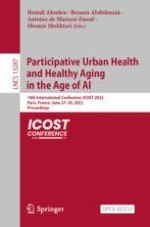1 Introduction
-
This work looks at the practical aspects of the building process of DT.
-
Provides analysis and insights into the difference in the performance between the actual and simulated environments.
2 Background
3 DT-Powered Smart Home
3.1 3D Reconstruction
3.2 Physics-Based Simulation
3.3 Semantics
4 Results and Discussion
4.1 Creation of the Digital 3D Model
-
The windows need to be covered in sunlight. The Astra Pro camera works based on infrared technologies. The light coming from the infrared projector can be outshined by the sunlight and no point cloud can be computed.
-
The mirror, window glass, TV surface, and black colored objects degrade the quality of the depth image and the point cloud.
-
The textureless walls, ground and ceiling must be avoided or rectified (e.g., by adding picture frames to plain walls). Because the visual odometry in RTAB-Map is based on extracted features from the RGB-D images. Therefore, in environments without enough features, the odometry cannot be computed.
Metrics | RMSE | Hausdorff |
|---|---|---|
Error (in m) | 0.088 | 1.354 |
4.2 Robot Navigation
4.3 Semantics
Object/Metrics | Precision | Recall | F-Score |
|---|---|---|---|
Chair | 0.53 | 0.88 | 0.66 |
Monitor | 0.97 | 0.68 | 0.80 |
